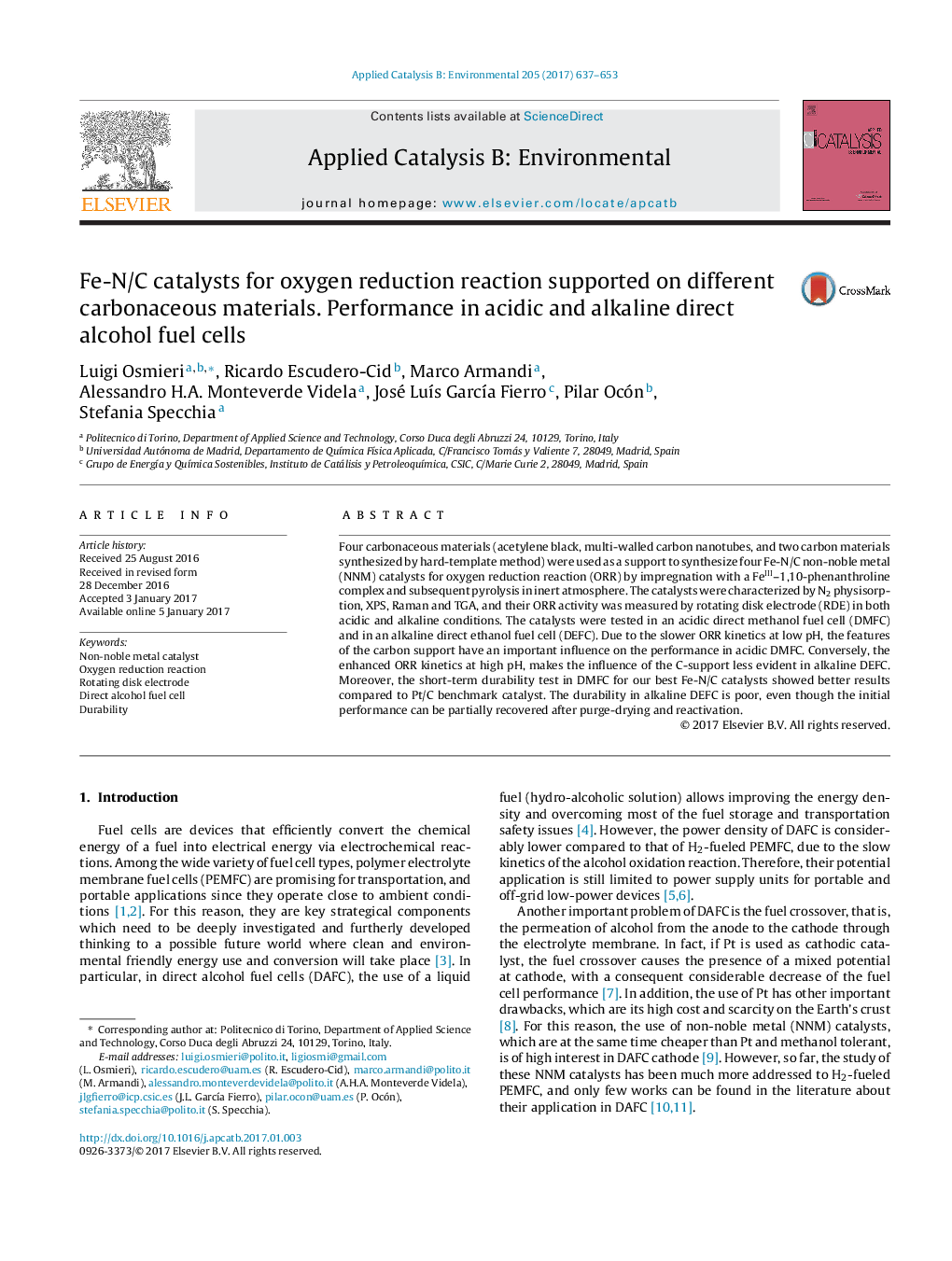| Article ID | Journal | Published Year | Pages | File Type |
|---|---|---|---|---|
| 6454410 | Applied Catalysis B: Environmental | 2017 | 17 Pages |
â¢Fe-N/C catalysts for ORR prepared using Fe-phenanthroline and different C-supports.â¢Weight loss during pyrolysis and C-disordered phase amount affect the ORR activity.â¢ORR activity is more influenced by C-support in acidic than in alkaline conditions.â¢Influence of C-supports features confirmed by acidic DMFC and alkaline DEFC tests.â¢Durability in acidic DMFC and alkaline DEFC was assessed.
Four carbonaceous materials (acetylene black, multi-walled carbon nanotubes, and two carbon materials synthesized by hard-template method) were used as a support to synthesize four Fe-N/C non-noble metal (NNM) catalysts for oxygen reduction reaction (ORR) by impregnation with a FeIII-1,10-phenanthroline complex and subsequent pyrolysis in inert atmosphere. The catalysts were characterized by N2 physisorption, XPS, Raman and TGA, and their ORR activity was measured by rotating disk electrode (RDE) in both acidic and alkaline conditions. The catalysts were tested in an acidic direct methanol fuel cell (DMFC) and in an alkaline direct ethanol fuel cell (DEFC). Due to the slower ORR kinetics at low pH, the features of the carbon support have an important influence on the performance in acidic DMFC. Conversely, the enhanced ORR kinetics at high pH, makes the influence of the C-support less evident in alkaline DEFC. Moreover, the short-term durability test in DMFC for our best Fe-N/C catalysts showed better results compared to Pt/C benchmark catalyst. The durability in alkaline DEFC is poor, even though the initial performance can be partially recovered after purge-drying and reactivation.
Graphical abstractDownload high-res image (199KB)Download full-size image
